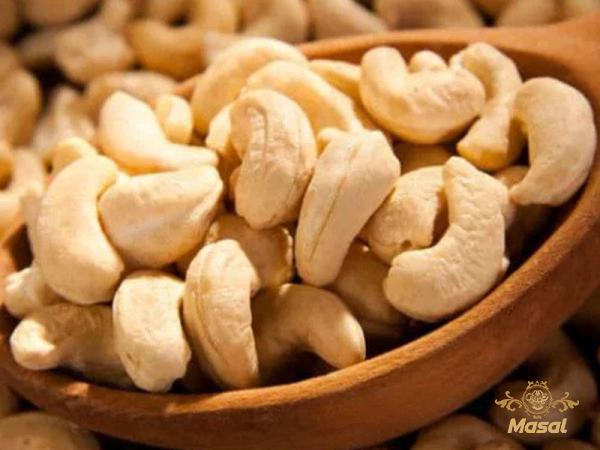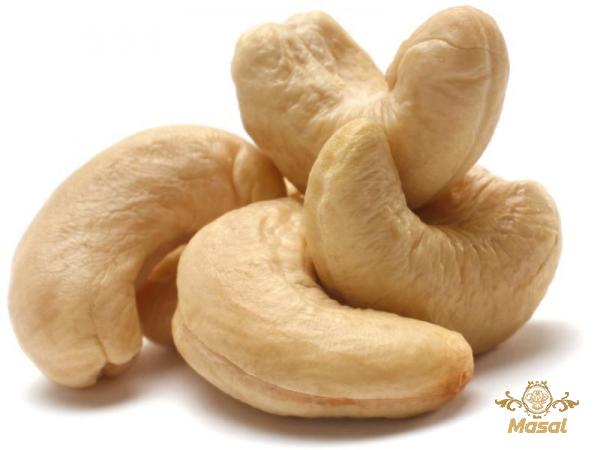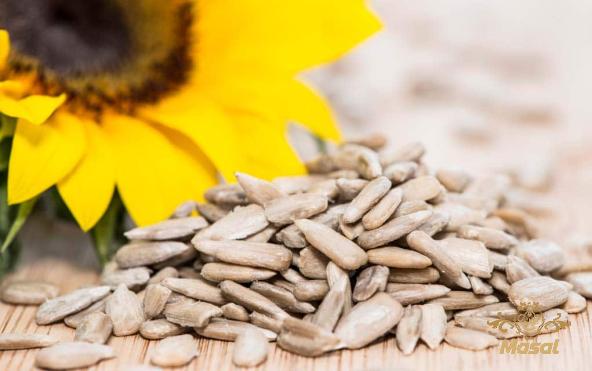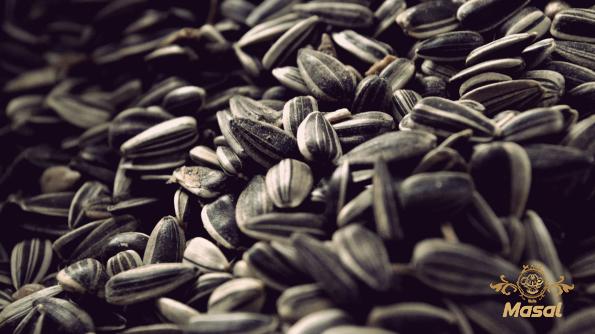The cashew market plays a significant role in the global nut industry, with cashews being one of the most sought-after and consumed tree nuts worldwide. The price of cashews is influenced by various factors such as supply and demand dynamics, production volumes, quality standards, trade policies, and geopolitical factors. Understanding the cashew market rate is essential for stakeholders including farmers, processors, traders, exporters, and consumers. This article provides an overview of the cashew market rate, including recent trends, key drivers, and future projections. Current Trends in Cashew Market Rate: 1. Rising Demand: The global demand for cashews has been steadily increasing due to the growing popularity of plant-based diets, expanding middle-class populations in emerging economies, and increased consumer awareness about the health benefits of cashew consumption. 2. Production and Supply: Major cashew-producing countries include Vietnam, India, Ivory Coast, and Nigeria. Production volumes and crop yields can fluctuate due to climatic conditions, pests and diseases, and changes in agricultural practices. Any disruption in the supply chain can impact the cashew market rate. 3. Quality Standards: The quality of cashews is a crucial factor that affects market prices. Buyers, especially from the processed food industry and retail sector, seek high-quality cashews that meet specific criteria such as size, color, taste, and shelf life. Premium quality cashews often command higher prices in the market. 4. Trade Policies and Tariffs: Trade policies, import/export regulations, and tariffs imposed by governments have a significant impact on the cashew market rate. Changes in trade agreements, duties, and barriers to entry can influence the flow of cashews across borders and affect prices. 5. Geopolitical Factors: Political instability, conflicts, and natural disasters in major cashew-producing and consuming regions can disrupt the supply chain and lead to price fluctuations. Sociopolitical factors play an important role in determining market rates, particularly in countries that heavily depend on cashew exports. Factors Influencing Cashew Market Rate: 1. Demand-Supply Dynamics: The imbalance between demand and supply significantly affects cashew market prices. An increase in demand without a proportionate increase in supply can lead to higher prices, and vice versa. Fluctuations in production, harvest cycles, and seasonal variations often influence prices. 2. Global Economic Conditions: Macroeconomic factors such as GDP growth rates, inflation, currency exchange rates, and purchasing power parity can impact the purchasing patterns of consumers and global trade dynamics. Economic recessions or uplifts in major cashew-consuming countries can directly affect the cashew market rate. 3. Currency Fluctuations: Cashew trade is highly impacted by currency price movements, as most transactions are conducted in U.S. dollars. Exchange rate fluctuations between importing and exporting countries can influence the competitiveness of cashew prices and impact trade volumes. 4. Climate Change and Natural Disasters: Global climate change has the potential to disrupt cashew cultivation and impact yields. Extreme weather events, such as droughts, floods, or cyclones, can considerably affect crop production, leading to increased prices due to reduced supply. 5. Processing and Value Addition: The cashew market rate is also influenced by the extent of processing and value addition involved. Raw cashews generally have lower market values compared to processed and value-added products, such as roasted cashews, cashew butter, or cashew-based snacks. Future Projections: Several trends are expected to shape the future cashew market rate: 1. Sustainable Production: As the demand for sustainably sourced products increases, stakeholders in the cashew industry are focusing on sustainable farming practices, fair trade, and certification standards. This shift towards sustainability may affect market rates, as certified and ethically produced cashews may command higher prices. 2. Market Diversification: To mitigate risk and take advantage of emerging markets, cashew producers and exporters are diversifying their customer base. Expanding into new regions, such as Asia-Pacific and Latin America, and targeting new consumer segments can influence prices and market dynamics. 3. Technological Advancements: Technological advancements in cashew processing, storage, and transportation are expected to improve efficiency, reduce losses, and maintain the quality of cashews. These advancements may impact prices by reducing overhead costs and improving productivity along the value chain. Conclusion: The cashew market rate is influenced by a range of factors, including demand and supply dynamics, production volumes, quality standards, trade policies, and geopolitical factors. Understanding these dynamics is essential for stakeholders in the cashew industry to make informed decisions regarding pricing, marketing, and supply chain management. By keeping abreast of market trends, projections, and drivers, players in the cashew sector can navigate the challenges and maximize opportunities in this dynamic global market. Cashew Market Rate: An Overview of Current Trends and Factors Influencing Prices Introduction: The cashew market is a vital component of the global nut industry, with cashews being one of the most consumed tree nuts globally. Market rates for cashews are influenced by several factors, including supply and demand dynamics, production volumes, quality standards, trade policies, and geopolitical factors. Stakeholders in the cashew industry, such as farmers, processors, traders, exporters, and consumers, need to have a deep understanding of the cashew market rate. This article provides a detailed overview of the current cashew market rate, including recent trends, key drivers, and future projections.

nut
 Current Trends in Cashew Market Rate: 1. Rising Demand: The global demand for cashews has been steadily increasing over the past decade. This growth can be attributed to several factors, including the rise of plant-based diets, the expanding middle-class populations in emerging economies, and increased consumer awareness about the health benefits of cashew consumption. These factors have contributed to a surge in demand for cashews and have led to an upward trend in market prices. 2. Production and Supply: Several countries, including Vietnam, India, Ivory Coast, and Nigeria, are major cashew producers. However, production volumes and crop yields can fluctuate due to various factors, such as climatic conditions, pests and diseases, and changes in agricultural practices. Any disruptions in the supply chain can impact the cashew market rate. For instance, a poor harvest season or transportation issues can lead to a decrease in supply and subsequent price increases. 3. Quality Standards: Cashew quality is a vital factor influencing market prices. Buyers, especially those from the processed food industry and retail sector, seek high-quality cashews that meet specific criteria such as size, color, taste, and shelf life. Premium quality cashews often command higher market prices due to their superior taste and appearance. Therefore, farmers and processors that produce high-quality cashews tend to enjoy better prices in the market. 4. Trade Policies and Tariffs: Trade policies, import/export regulations, and tariffs imposed by governments play a significant role in shaping cashew market rates. Changes in trade agreements, duties, and barriers to entry can influence the flow of cashews across borders and impact prices. For instance, an increase in import tariffs by a major cashew-consuming country can result in higher prices for cashews from exporting nations. 5. Geopolitical Factors: Geopolitical factors, such as political instability, conflicts, and natural disasters in major cashew-producing and consuming regions, can disrupt the cashew supply chain and lead to price fluctuations. For example, civil unrest in a cashew-producing country may disrupt harvest and processing operations, resulting in a decrease in supply and subsequent price increases. Therefore, stakeholders in the cashew industry must monitor geopolitical factors to anticipate potential impacts on market rates. Factors Influencing Cashew Market Rate: 1. Demand-Supply Dynamics: The relationship between demand and supply significantly affects cashew market prices. If demand outpaces supply, prices are likely to rise. Conversely, if supply exceeds demand, prices may decrease. Factors such as shifts in consumption patterns, changes in dietary preferences, and population growth all influence the demand for cashews. Crop yield variations, weather conditions, and fluctuations in agricultural practices impact the supply of cashews, affecting market rates.
Current Trends in Cashew Market Rate: 1. Rising Demand: The global demand for cashews has been steadily increasing over the past decade. This growth can be attributed to several factors, including the rise of plant-based diets, the expanding middle-class populations in emerging economies, and increased consumer awareness about the health benefits of cashew consumption. These factors have contributed to a surge in demand for cashews and have led to an upward trend in market prices. 2. Production and Supply: Several countries, including Vietnam, India, Ivory Coast, and Nigeria, are major cashew producers. However, production volumes and crop yields can fluctuate due to various factors, such as climatic conditions, pests and diseases, and changes in agricultural practices. Any disruptions in the supply chain can impact the cashew market rate. For instance, a poor harvest season or transportation issues can lead to a decrease in supply and subsequent price increases. 3. Quality Standards: Cashew quality is a vital factor influencing market prices. Buyers, especially those from the processed food industry and retail sector, seek high-quality cashews that meet specific criteria such as size, color, taste, and shelf life. Premium quality cashews often command higher market prices due to their superior taste and appearance. Therefore, farmers and processors that produce high-quality cashews tend to enjoy better prices in the market. 4. Trade Policies and Tariffs: Trade policies, import/export regulations, and tariffs imposed by governments play a significant role in shaping cashew market rates. Changes in trade agreements, duties, and barriers to entry can influence the flow of cashews across borders and impact prices. For instance, an increase in import tariffs by a major cashew-consuming country can result in higher prices for cashews from exporting nations. 5. Geopolitical Factors: Geopolitical factors, such as political instability, conflicts, and natural disasters in major cashew-producing and consuming regions, can disrupt the cashew supply chain and lead to price fluctuations. For example, civil unrest in a cashew-producing country may disrupt harvest and processing operations, resulting in a decrease in supply and subsequent price increases. Therefore, stakeholders in the cashew industry must monitor geopolitical factors to anticipate potential impacts on market rates. Factors Influencing Cashew Market Rate: 1. Demand-Supply Dynamics: The relationship between demand and supply significantly affects cashew market prices. If demand outpaces supply, prices are likely to rise. Conversely, if supply exceeds demand, prices may decrease. Factors such as shifts in consumption patterns, changes in dietary preferences, and population growth all influence the demand for cashews. Crop yield variations, weather conditions, and fluctuations in agricultural practices impact the supply of cashews, affecting market rates.
Specifications of nut
 2. Global Economic Conditions: Macroeconomic factors, such as GDP growth rates, inflation, currency exchange rates, and purchasing power parity, have a direct impact on the purchasing patterns of consumers and global trade dynamics. Economic recessions or expansions in major cashew-consuming countries can directly affect the cashew market rate. For instance, during a recession, consumers may cut back on discretionary spending, leading to a decrease in cashew demand and subsequently lowering prices. 3. Currency Fluctuations: Cashew trade is highly affected by fluctuations in currency exchange rates since most transactions are conducted in U.S. dollars. Differences in exchange rates between cashew-importing and exporting countries can impact the competitiveness of cashew prices and influence trade volumes. For instance, a weaker local currency in a cashew-producing country can make cashews more affordable for importers, leading to increased demand and potentially higher prices. 4. Climate Change and Natural Disasters: Global climate change has the potential to disrupt cashew cultivation and impact yields. Extreme weather events, such as droughts, floods, or cyclones, can considerably affect cashew production, leading to reduced supply and increased prices. Climate resilience measures, such as improved irrigation systems and crop management practices, are crucial in mitigating the effects of climate change on cashew market rates. 5. Processing and Value Addition: The extent of processing and value addition involved in the cashew supply chain can influence market rates. Raw cashews generally have lower market values compared to processed and value-added products such as roasted cashews, cashew butter, or cashew-based snacks. By adding value to raw cashews through processing, farmers and processors can increase profitability and command higher prices in the market.
2. Global Economic Conditions: Macroeconomic factors, such as GDP growth rates, inflation, currency exchange rates, and purchasing power parity, have a direct impact on the purchasing patterns of consumers and global trade dynamics. Economic recessions or expansions in major cashew-consuming countries can directly affect the cashew market rate. For instance, during a recession, consumers may cut back on discretionary spending, leading to a decrease in cashew demand and subsequently lowering prices. 3. Currency Fluctuations: Cashew trade is highly affected by fluctuations in currency exchange rates since most transactions are conducted in U.S. dollars. Differences in exchange rates between cashew-importing and exporting countries can impact the competitiveness of cashew prices and influence trade volumes. For instance, a weaker local currency in a cashew-producing country can make cashews more affordable for importers, leading to increased demand and potentially higher prices. 4. Climate Change and Natural Disasters: Global climate change has the potential to disrupt cashew cultivation and impact yields. Extreme weather events, such as droughts, floods, or cyclones, can considerably affect cashew production, leading to reduced supply and increased prices. Climate resilience measures, such as improved irrigation systems and crop management practices, are crucial in mitigating the effects of climate change on cashew market rates. 5. Processing and Value Addition: The extent of processing and value addition involved in the cashew supply chain can influence market rates. Raw cashews generally have lower market values compared to processed and value-added products such as roasted cashews, cashew butter, or cashew-based snacks. By adding value to raw cashews through processing, farmers and processors can increase profitability and command higher prices in the market.
buy nut
 Future Projections: 1. Sustainable Production: As the demand for sustainably sourced products increases, stakeholders in the cashew industry are focusing on sustainable farming practices, fair trade certifications, and environmental considerations. This shift towards sustainability may affect market rates, as certified and ethically produced cashews may command higher prices in response to consumer preferences for responsible sourcing. 2. Market Diversification: To mitigate risk and take advantage of emerging markets, cashew producers and exporters are diversifying their customer base. Expanding into new regions, targeting new consumer segments, and developing niche markets can influence prices and market dynamics. By tapping into new markets with growing demand, growers and exporters can potentially negotiate better prices and reduce their exposure to fluctuations in existing markets. 3. Technological Advancements: Technological advancements in cashew processing, storage, and transportation are expected to improve efficiency, reduce losses, and maintain the quality of cashews. These advancements may impact prices by reducing overhead costs and improving productivity along the value chain. For instance, improved processing methods that increase yields and reduce waste can lead to cost savings and potentially lower market prices. Conclusion: The cashew market rate is influenced by a wide range of factors, including demand and supply dynamics, production volumes, quality standards, trade policies, and geopolitical factors. Stakeholders in the cashew industry must carefully monitor these factors to make informed decisions regarding pricing, marketing, and supply chain management. By staying up to date on market trends, projections, and drivers, players in the cashew sector can navigate the challenges and maximize opportunities in this dynamic global market. Additionally, they can adapt to changing consumer preferences, sustainability demands, and shifts in global trade dynamics, ultimately securing a profitable position in the competitive cashew market.
Future Projections: 1. Sustainable Production: As the demand for sustainably sourced products increases, stakeholders in the cashew industry are focusing on sustainable farming practices, fair trade certifications, and environmental considerations. This shift towards sustainability may affect market rates, as certified and ethically produced cashews may command higher prices in response to consumer preferences for responsible sourcing. 2. Market Diversification: To mitigate risk and take advantage of emerging markets, cashew producers and exporters are diversifying their customer base. Expanding into new regions, targeting new consumer segments, and developing niche markets can influence prices and market dynamics. By tapping into new markets with growing demand, growers and exporters can potentially negotiate better prices and reduce their exposure to fluctuations in existing markets. 3. Technological Advancements: Technological advancements in cashew processing, storage, and transportation are expected to improve efficiency, reduce losses, and maintain the quality of cashews. These advancements may impact prices by reducing overhead costs and improving productivity along the value chain. For instance, improved processing methods that increase yields and reduce waste can lead to cost savings and potentially lower market prices. Conclusion: The cashew market rate is influenced by a wide range of factors, including demand and supply dynamics, production volumes, quality standards, trade policies, and geopolitical factors. Stakeholders in the cashew industry must carefully monitor these factors to make informed decisions regarding pricing, marketing, and supply chain management. By staying up to date on market trends, projections, and drivers, players in the cashew sector can navigate the challenges and maximize opportunities in this dynamic global market. Additionally, they can adapt to changing consumer preferences, sustainability demands, and shifts in global trade dynamics, ultimately securing a profitable position in the competitive cashew market.










Your comment submitted.